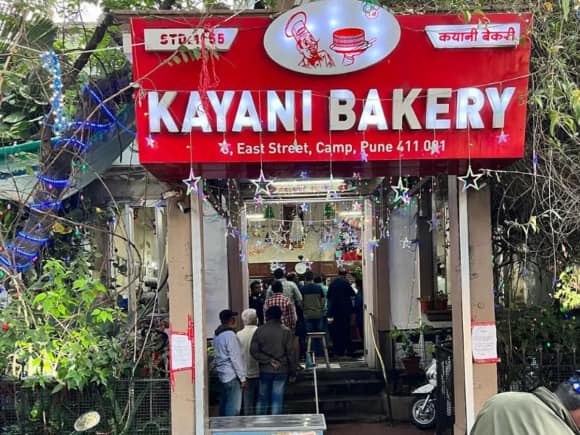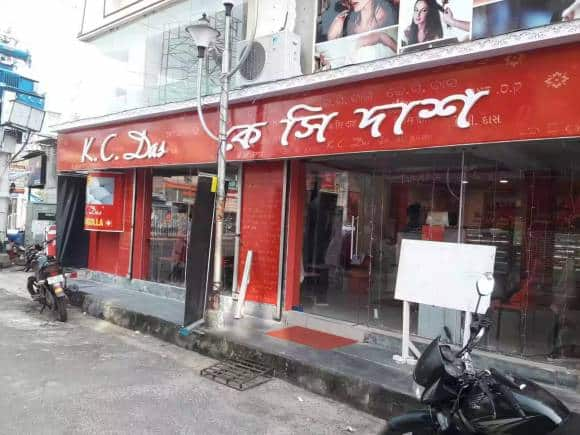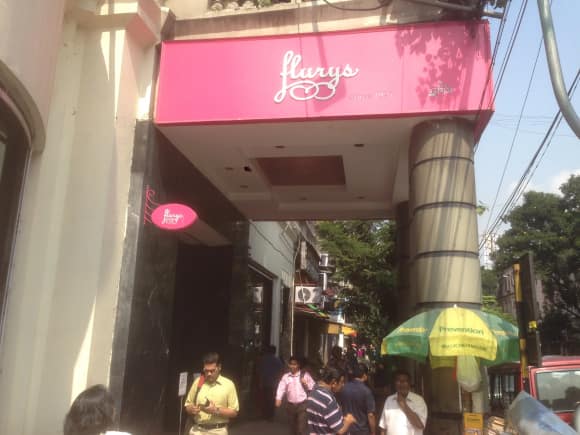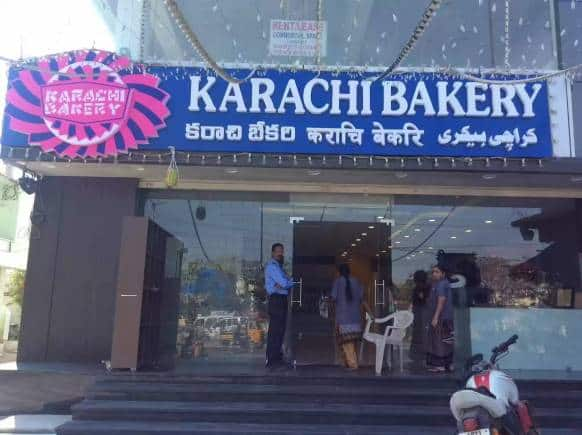



“Kulfi Ice-cream Nahi Hoti, Kulfi, Kulfi Hoti Hai,” goes the famous tag line of Lucknow’s Prakash Kulfi. It is a line that defies translation. So, do the flavours and eccentricities in old Indian mithai shops and bakeries. At times, patrons need to squeeze themselves into the tiniest of lanes, dodge stray cattle or cautiously step under crumbling mansions to get to these food establishments. But the chaotic joie de vivre is also part of the charm of eating here. Ten of these generational businesses from India have made it to the coveted list of TasteAtlas, a global catalogue for local food.
The online platform for local recipes as well as the history of edibles, spices, condiments and produce, came out with its guide: “150 Most Legendary Dessert Places in the World,” as a nudge to make sugar pilgrimages across the globe.
The Indian entries stand out, some of them just for being located in neighbourhoods with distinct soundscapes of markets and people. Most of them had modest beginnings but their trade has soared in recent times, thanks to time-tested recipes and exceptionally superior ingredients. Others have been included for being there when a new country was born but may not hold the same sway over the younger generation with a crazy number of options at their fingertips, some of which taste better than nostalgia.
As TasteAtlas puts it succinctly: “Collectively, these venues encapsulate a rich global culinary tapestry, where timeless quality triumphs over fleeting fashions.” So, here’s a round-up of places creating waves for their unique iterations of sugar.
Kayani Bakery, Pune Kayani Bakery, Pune.
Kayani Bakery, Pune.Hard work lies at the core of the Parsi identity, as does trade and industry. This translates into no-frills yet efficient functioning in most Parsi food establishments. Pune’s Kayani Bakery is no exception to this rule, where brisk packing of biscuit boxes, metal trays, simple wood panel interiors and long-stemmed ceiling fans make up a time capsule. Started in 1955 by Khodayar, Hormazdiar and Rustom Kayani in Pune’s Camp area, the bakery’s Shrewsbury biscuits and mawa cake lie at the intersections of tradition and craftsmanship. “Despite the almost godown-like look of the shop, what I remember is the mawa cake’s rich milky taste,” says Anoop Chand, a banker who came to the old part of the town, driven by fables of Kayani’s melt-in-the-mouth cookies. He remembers Kayani’s mawa cake alright, but what is forever etched in his memory is a world that this bakery represents — quaint and irreplaceable. “I still remember the bougainvillea draped around the shop and fresh strawberries being peddled on the streets. It was a world I wanted to dive in straight away,” says Chand.
K.C. Das, Kolkata KC Das, Kolkata.
KC Das, Kolkata.Roshogollas from K.C. Das ribbon through the memories of most Kolkata residents. K.C. Das’s father Nobin Chandra Das is credited to have created the rasgulla in the first place, stamping the brand’s name forever in the cultural imagination of Bengalis.
My experience has also been framed by tins of canned rasgullas my parents carted all the way to Delhi for assorted relatives, way back in the '80s. The concept of canning was a novelty even then, but the brand is known to pioneer it as early as 1930. For my parents, lugging around tins of rasgulla on long-distance trains was a private family ritual, undertaken with the singular purpose of serving loved ones the taste of authentic Bengali sweets.
K.C. Das is many things to many people. The confectioner’s oldest outlet in Esplanade lies at the centre of the city’s arterial roads, hands reaching out to both the past and present at the same time. It has been the venue for countless appointments through the decades and is still a buzzing haunt for enthusiasts looking for the real deal.
 Flurys, Park Street, Kolkata.
Flurys, Park Street, Kolkata.Flurys is a testament to Kolkata’s syncretic society and expansive food culture. The tearoom and bakery was started by the Swiss expatriate couple Joseph and Freida Flury. They were joined by Quinto Cinzio Trinca and the establishment set up by them in 1927 was called Flury & Trinca. Various change of hands later, Flurys is now an independent brand that is making new connections between old world confections and modern patisserie wonders. The brand’s first outlet on Park Street is central to the larger identity of the Kolkata resident. During Christmas, people travel shocking distances to throng Park Street with its promise of tinsel and fairy lights. It is also an occasion to binge on rich plum cakes and rum balls by Flurys. The bakery has also been present in other key moments in the lives of city folks. “As a wee six-year-old I had gone to watch the iconic 1983 India-West Indies test match at the Eden Gardens. Before reaching the stadium, my uncle and I went to Flurys to pick up its chicken sandwiches and patties. The taste still lingers,” says advertising professional Kundan Chakrabarty.
Karachi Bakery, Hyderabad Karachi Bakery, Hyderabad.
Karachi Bakery, Hyderabad.Everything looks old and nostalgic around the first outlet of Karachi Bakery, in Hyderabad’s Moazzam Jahi Market. It is walking distance from Charminar, and surrounded by a melee of street vendors — right from cosmetic jewellery and fruit vendors to the fabled dosa food cart called ‘Ramki Bandi.’ In this encyclopaedic selection of itinerant old businesses, Karachi Bakery holds its own with its dizzying variety of biscuits, patties, buns, cakes and brownies.
Make no mistake. Patrons come here mostly for the biscuit spectacle. Inside gleaming showcases, the brand’s bestseller fruit biscuits sit pretty alongside rows of rusks, pista cookies, cream jam biscuits, butter cookies and much else.
“When I first moved into the city, I went with a bunch of friends. I had heard so much about Karachi Bakery and it turned out to be exactly as I had pictured, with its framed pictures, metal trays and long menus plastered on the walls,” says Alisha Singh, an employee of a multinational technology company.
Balaram Mullick & Radharaman Mullick, Kolkata Balaram Mullick & Radharaman Mullick, Kolkata.
Balaram Mullick & Radharaman Mullick, Kolkata.The 130-year-old sweet shop now has several branches across Kolkata. The new outlets, with their gleaming interiors and jewellery case like displays, are a temple of fusion sweets — traditional Bengali mithai with innovative touches. The procession of desserts run the gamut, from baked roshogolla (rasgullas given a shower of thickened milk and baked), and strawberry lava sandesh (with the promise of strawberry puree bursting forth), to butterscotch and watermelon sandesh.
Billed as the perfect venue for ‘mishti’ salvation, Balaram Mullick & Radharaman Mullick, started its journey in 1885 as Ganesh Mishtanna Bhandar, but is now vowing to take the Bengali palate on an adventure of a lifetime.
K. Rustom & Co., Mumbai K Rustom & Co., Mumbai.
K Rustom & Co., Mumbai.Mumbai’s K. Rustom & Co. is not a swish ice cream parlour in a fancy shopping mall. Located right outside Churchgate railway station, it is a small, fuss-free outlet dispensing alchemic deliciousness involving milk and fruit. Founded by Khodabux Rustom Irani in 1953, the ice cream menu evokes nostalgia for its patrons who have come here with their grandparents and children. Most swoon over the unique flavours. “I came to specifically try their kharbuza or muskmelon ice cream when I was working in Mumbai,” says Chand. Other flavours that marry textural lushness with off-kilter ideas include Nescafe, rose ripple, guava and coco mint crunch. The bold flavours are further enhanced through presentation. Slices of ice cream are slid between wafers creating a unique mouthfeel.
Prakash Ki Mashoor Kulfi, Lucknow Prakash Ki Mashoor Kulfi, Lucknow.
Prakash Ki Mashoor Kulfi, Lucknow.Dessert and community blend into one another at Prakash Ki Mashoor Kulfi. Look beyond the din of Lucknow’s Aminabad area and the signboard of Prakash kulfi seduces you with the promise of ambrosia. It is a glue that binds students, businessmen, shoppers and other assorted groups that flock to the area to pick up their purchases. “As a student of fashion in 1997-98, I was a regular at Prakash. Aminabad was our favourite haunt to source fabrics for our projects on a budget. We also avoided travelling by autos, saved up money and went on a kulfi binge here,” says fashion professional Gurrpreet Chhabra.
Kulfi is one of the best iterations of milk at Prakash. It is stored in clay matka containers draped in burlap and stuffed with chunks of ice. Every batch is made from scratch, and takes around 7-8 hours to set into moulds. Not surprisingly, each ingredient is natural, with the fragrance of kesar, pista, milk, almond, rosewater and cardamom set against each other to reach a flavour crescendo.
Falooda, an inscrutable part of this Indian dessert, comes in two varieties here — plain white and kesariya. A sprinkling of rose water on the sliced kulfi completes the full expression of the classic dish.
Kuremal’s Kulfi, Delhi Kuremal Mohan Lal Kulfiwale, Old Delhi.
Kuremal Mohan Lal Kulfiwale, Old Delhi.Within the framework of the kulfi, Kuremal serves a spectrum of interpretations. The original shop, known as Kuremal Mohan Lal in Old Delhi’s Sita Ram Bazaar, nestles among the crumbling havelis and alleyways that lead you nowhere and everywhere. Cries of vegetable vendors filter in through dust-speckled air while rickshaw pullers negotiate through the maze of streets with the deftness of a parkour practitioner. Kuremal lies at the heart of this uncertain and restless slice of Delhi, a metaphorical marker of the old ways of living.
You will find kulfis in a riot of tropical fruit flavours here, jammed inside hollowed out mangoes, oranges, pomegranates and what have you. It is a well-rehearsed flavour orchestra that has patrons swooning through the decades. In addition, there are fruit-based kulfis, including falsa, jamun and watermelon, that explodes on the tongue and tints your palate with the colours of Holi.
Old Famous Jalebi Wala, Delhi Old Famous Jalebi Wala, Old Delhi.
Old Famous Jalebi Wala, Old Delhi.Jalebis, the tangle of fried batter, dripping with sugar syrup, get a slightly different expression in this outlet wedged into the beginning of Dariba Corner in Delhi’s Chandni Chowk. These are chunkier versions of the fabled sweet, with each piece weighing around 100 gm. One can buy the jalebis with or without rabri but the real differentiator in terms of taste is the sweet’s light and airy texture as well as crunchy bite.
Nem Chand Jain, from a small village near Agra founded this shop with modest resources and sky-high ambitions. Today, the melee of patrons jostling to grab their orders seems to validate the founder’s impossible dreams. Desi ghee, khandsari sugar and other local ingredients combine to make this sugar spiral a polestar in the old Delhi mithai scene.
Chitale Bandhu, Pune Chitale Bandhu, Pune.
Chitale Bandhu, Pune.Is the bakarwadi a dessert? Indians would come up with a resounding no. Yet it finds a mention in the TasteAtlas roster. Whether sweet or savoury, no one can deny that the deep-fried pinwheel snack called bakarwadi is popular beyond measure. And key thing to remember here is the brand. Chitale Bandhu is a Maharashtrian business with a Gujarati bestseller product. The first taste of Chitale’s bakarwadi came my way, courtesy a former Punekar colleague. Once he opened a packet of bakarwadi, the north Indian office crowd indisputably crowned it the greatest snack in the world.
While Chitale’s first store in Pune’s Bajirao Road is still up and running, with light-coloured wood interiors, blue uniformed staff, as well as steel and glass showcases, there are now multiple outlets of the brand across several cities in Maharashtra and even Goa. Of course, the brand’s best-selling bites can now also be savoured by ordering online.
Discover the latest Business News, Sensex, and Nifty updates. Obtain Personal Finance insights, tax queries, and expert opinions on Moneycontrol or download the Moneycontrol App to stay updated!
Find the best of Al News in one place, specially curated for you every weekend.
Stay on top of the latest tech trends and biggest startup news.